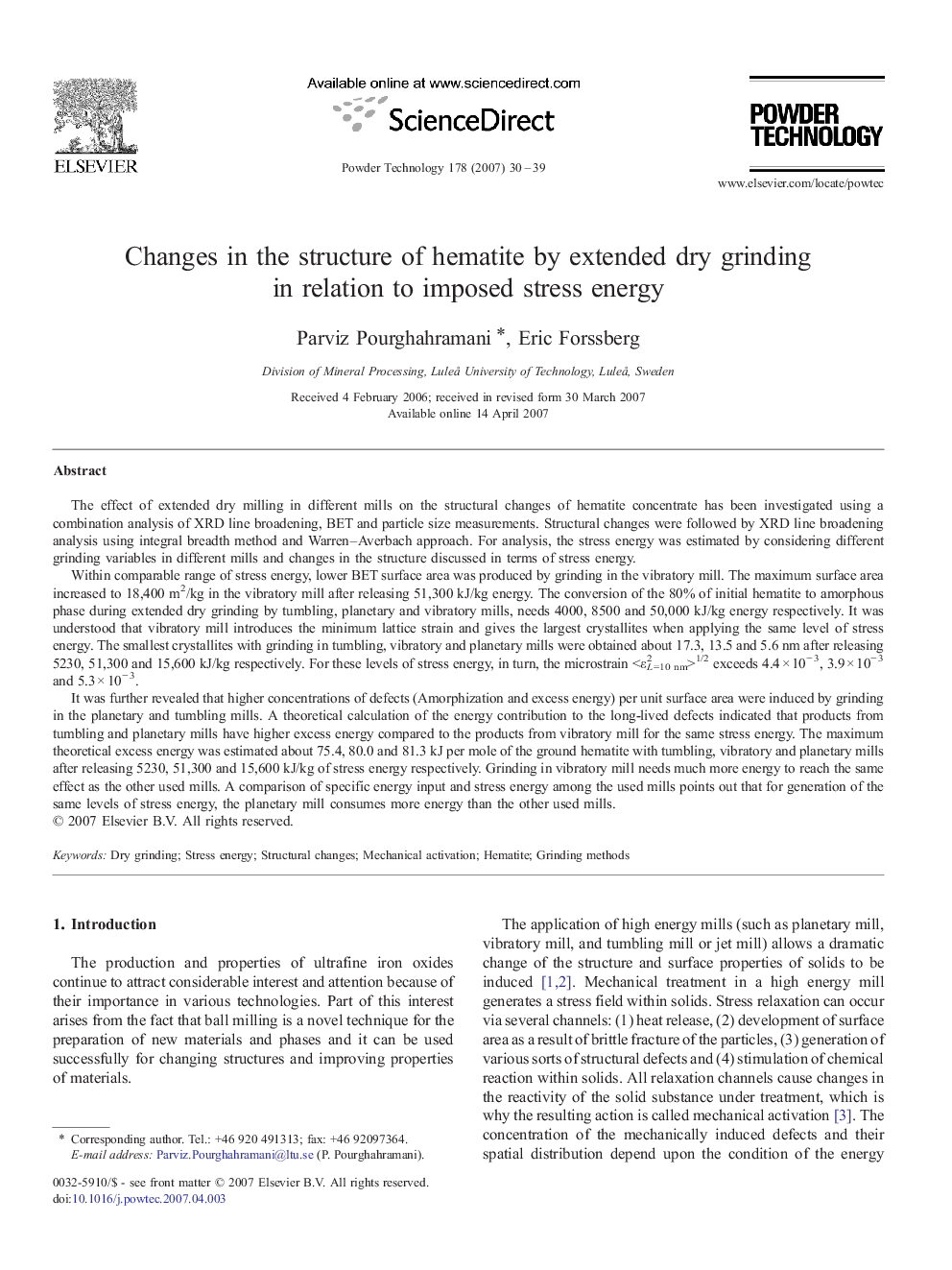| Article ID | Journal | Published Year | Pages | File Type |
|---|---|---|---|---|
| 239067 | Powder Technology | 2007 | 10 Pages |
The effect of extended dry milling in different mills on the structural changes of hematite concentrate has been investigated using a combination analysis of XRD line broadening, BET and particle size measurements. Structural changes were followed by XRD line broadening analysis using integral breadth method and Warren–Averbach approach. For analysis, the stress energy was estimated by considering different grinding variables in different mills and changes in the structure discussed in terms of stress energy.Within comparable range of stress energy, lower BET surface area was produced by grinding in the vibratory mill. The maximum surface area increased to 18,400 m2/kg in the vibratory mill after releasing 51,300 kJ/kg energy. The conversion of the 80% of initial hematite to amorphous phase during extended dry grinding by tumbling, planetary and vibratory mills, needs 4000, 8500 and 50,000 kJ/kg energy respectively. It was understood that vibratory mill introduces the minimum lattice strain and gives the largest crystallites when applying the same level of stress energy. The smallest crystallites with grinding in tumbling, vibratory and planetary mills were obtained about 17.3, 13.5 and 5.6 nm after releasing 5230, 51,300 and 15,600 kJ/kg respectively. For these levels of stress energy, in turn, the microstrain <εL=10 nm2>1/2 exceeds 4.4 × 10− 3, 3.9 × 10− 3 and 5.3 × 10− 3.It was further revealed that higher concentrations of defects (Amorphization and excess energy) per unit surface area were induced by grinding in the planetary and tumbling mills. A theoretical calculation of the energy contribution to the long-lived defects indicated that products from tumbling and planetary mills have higher excess energy compared to the products from vibratory mill for the same stress energy. The maximum theoretical excess energy was estimated about 75.4, 80.0 and 81.3 kJ per mole of the ground hematite with tumbling, vibratory and planetary mills after releasing 5230, 51,300 and 15,600 kJ/kg of stress energy respectively. Grinding in vibratory mill needs much more energy to reach the same effect as the other used mills. A comparison of specific energy input and stress energy among the used mills points out that for generation of the same levels of stress energy, the planetary mill consumes more energy than the other used mills.
Graphical abstractThe investigation of structural changes in three mills revealed that the smallest crystallites with grinding in tumbling, vibratory and planetary mills were obtained about 17.3, 13.5 and 5.6 nm after releasing 5230, 51300 and 15600 kJ/kg respectively. For these levels of stress energy, in turn, the microstrain <εL=10 nm2>1/2 exceeds 4.4 × 10− 3, 3.9 × 10− 3 and 5.3 × 10− 3. Vibratory mill produced the minimum X-ray amorphous phase for a given stress energy.The content of X-ray amorphous phase in different milling environment as a function of stress energy.Figure optionsDownload full-size imageDownload as PowerPoint slide
